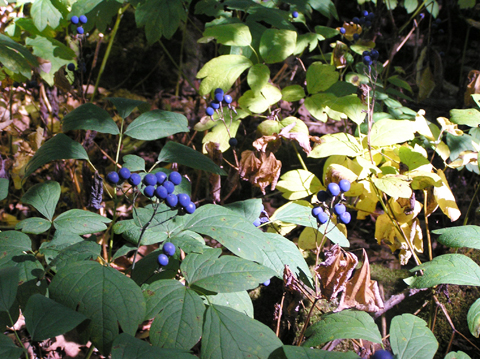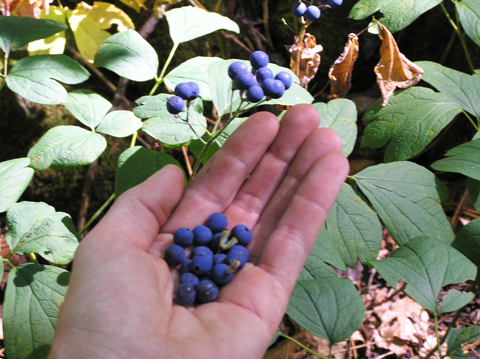 |
| Home | Ordering By Mail | Purchase Manual: Using Native Plants in Urban Landscapes |
|
|||||
Species Name: Caulophyllum thalictroides
Common Name: Blue Cohosh
Zone: 3 to 8
Distribution: New Brunswick to Ontario and Manitoba, south to Soouth Carolina, Alabama and Missouri.
Seed collection: Seed matures in late August to early September in the Northeast. The seed turns from green to a deep sky blue color growing darker as the fruit shrivels. Seed can be collected any time during or after it begins to change color. Early collection of seed can reduce the time it takes for the seed to germination. Seed develops in a cluster of a few to about one dozen pea sized seeds on the tip of the plant. Each seed holds a single embryo. Strip seed from the stalk by hand.
Seed handling: Seed can be planted immediately or stored for later planting. Remove seed coat, which inhibits germination, soon after collecting. Seed coat can be removed by placing seed in a food processor. Process for about one minute or until most of the seed coat is removed. The hard seed coat protects the seed from injury. Begin stratifying seed in moist potting media for later planting. Seed can be planted in the spring of the first or second year or seed may be stored in moist potting mix until individual seeds begin to germinate then remove germinating seed and plant.
Germination requirements: Seed must undergo repeated cycles of warm/moist stratification followed by cold/moist stratification to overcome seed dormancy. This deep dormancy means that most seed will not germinate until the second, third or even fourth year. A small percentages of seed may germinate the second year. The large seed embryo produces a large seedling that grows quickly. First year seedlings develop a single compound leaf with stringy yellow roots. Seedlings require half to full shade.
Ecology: Blue cohosh grows in any moist rich woodland soil. It most often is found on calcareous soils and limestone outcrops but will also grow in neutral to slightly acidic soils. It can grow in great profusion in ideal conditions, carpeting acres of forest floor with knee deep blue-green foliage. Its forests associates are frequently Sugar maple and many woodland forbs such as Trillium, Baneberry, Blood root and False Solomon seal. It grows in moderate to deep shade. Blue cohosh is very resistant to deer browsing and this may be one reason it is sometimes found in pure stands as other native plants may have been eaten into obscurity. Cohosh should be widely planted and encouraged where deer have decimated the understory vegetation. It can provide critical ground cover for ground nesting birds and help to prevent invasive plants from dominating the understory. It can function as an effective shade tolerant ground cover.

Cohosh seed turns blue in late summer and remain on the stalk after the leaves have senesced.

Collect cohosh seed after it turns blue and ready for harvest.
Blue cohosh seedlings